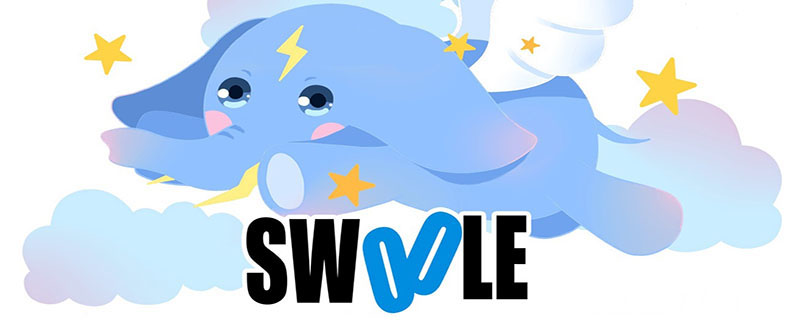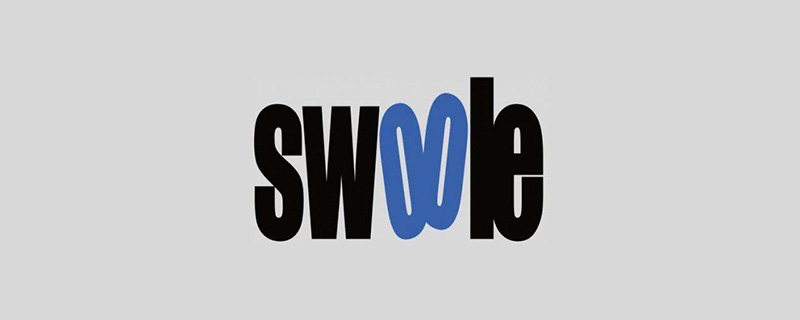With the rapid development of social media, more and more companies and individuals need to implement social functions in their websites or applications to better interact and communicate with users. In order to achieve high concurrency and low latency social functions, developers need to choose some high-performance tools and frameworks. Among them, Swoole is a very good choice.
Swoole is an asynchronous, high-performance network communication framework based on PHP. It is designed to improve the performance of web applications, especially when handling high concurrent requests. Swoole can be seamlessly integrated with the conventional language elements of PHP. It also provides APIs for directly operating underlying coroutines, TCP, UDP, Unix sockets, HTTP, WebSocket and other network protocols, allowing developers to more easily implement various High performance tasks.
Let’s discuss how to use Swoole to implement high-performance social functions.
- Implementing WebSocket service
WebSocket is a very important protocol when implementing social functions. It supports two-way, real-time data transmission, allowing the server to push messages to the client in real time, and also allowing the client to interact with the server in real time. In Swoole, we can use the swoole_websocket_server class to implement the WebSocket service.
The following is a simple example:
$server = new swoole_websocket_server("0.0.0.0", 9501);
$server->on('open', function (swoole_websocket_server $server, $request) {
echo "WebSocket客户端{$request->fd}已连接
";
});
$server->on('message', function (swoole_websocket_server $server, $frame) {
echo "来自客户端{$frame->fd}的消息:{$frame->data}
";
$server->push($frame->fd, "这是来自服务器的回复");
});
$server->on('close', function ($server, $fd) {
echo "WebSocket客户端{$fd}已关闭
";
});
$server->start();In this example, we create a WebSocket server and listen to port 9501, printing log information when the client connects or disconnects. When receiving a message from the client, the server prints out the message content and replies with a message.
- Use coroutines to perform HTTP requests and push messages
Swoole provides support for coroutines, which allows us to perform operations such as HTTP requests and asynchronous tasks more conveniently. When implementing social functions, we often need to make HTTP requests, such as obtaining the user's personal information, friend list and other information. The following is an example of using the Swoole coroutine HTTP client:
co(function () {
$cli = new SwooleCoroutineHttpClient('www.example.com', 80);
$cli->set(['timeout' => 1]);
$cli->setHeaders([
'Host' => 'www.example.com',
'User-Agent' => 'Chrome/49.0.2587.3',
'Accept' => 'text/html,application/xhtml+xml,application/xml',
'Accept-Encoding' => 'gzip',
]);
$cli->get('/path/to/api');
echo $cli->body;
});In this example, we use the SwooleCoroutineHttpClient class to make HTTP requests. This class is a coroutine client that can implement asynchronous HTTP request operations. Before sending a request, we can set the request timeout and request header information. After executing the request, we can get the response content through $cli->body.
Next, we can use the coroutine HTTP request in the WebSocket server to request the client, obtain the user information and push it to the client. For example, when getting the user's profile, we can use the following code:
$server->on('message', function (swoole_websocket_server $server, $frame) {
$path = '/user/profile?id=' . $frame->data;
$cli = new SwooleCoroutineHttpClient('www.example.com', 80);
$cli->set(['timeout' => 1]);
$cli->setHeaders([
'Host' => 'www.example.com',
'User-Agent' => 'Chrome/49.0.2587.3',
'Accept' => 'text/html,application/xhtml+xml,application/xml',
'Accept-Encoding' => 'gzip',
]);
$cli->get($path);
$profile = json_decode($cli->body, true);
$server->push($frame->fd, json_encode($profile));
});In this example, we received a message through the WebSocket server indicating that we want to get the user's profile. We use the SwooleCoroutineHttpClient class to make HTTP requests and parse the response JSON data into the array $profile. Finally, the contents of $profile are pushed to the client through WebSocket.
- Use Swoole Redis client for caching
Caching is a very common requirement when implementing social functions. In order to improve the efficiency of reading data, we often need to use caching tools such as Redis to cache data. In Swoole, you can use the Swoole Redis client to quickly interact with Redis instances.
The following is an example of using the Swoole Redis client:
$redis = new SwooleCoroutineRedis();
$redis->connect('127.0.0.1', 6379);
$redis->set('key', 'value');
$value = $redis->get('key');In this example, we use the SwooleCoroutineRedis class to implement the functions of the Redis client, which can easily read and write data. Enter operation.
For caching application scenarios, for example, when obtaining the friend list, we can cache the data into Redis. When the user requests the friend list, the data is first read from Redis. If it does not exist in the cache, then Read data from the database and cache it in Redis. This can greatly reduce the burden on the database and improve the efficiency of reading data.
- Realizing broadcast and private chat functions
In social applications, broadcast and private chat functions are also essential. The broadcast function allows messages to be sent to all online users at once, while the private chat function enables peer-to-peer real-time communication between users. In Swoole, these two functions can be achieved through the WebSocket server.
The following is a simple implementation:
$server->on('message', function (swoole_websocket_server $server, $frame) {
$data = json_decode($frame->data, true);
switch ($data['command']) {
case 'broadcast':
$server->push('broadcast', $data['message']);
break;
case 'private':
$server->push($data['id'], $data['message']);
break;
}
});In this example, we perform broadcast or private chat operations by judging the type of message received. If the received message type is broadcast, the message will be pushed to all online users; if the received message type is private, the message will be pushed to the specified user.
In the WebSocket client, we also need to make some corresponding adjustments, such as joining the broadcast room to receive broadcast messages:
let ws = new WebSocket('ws://localhost:9501');
ws.onopen = function () {
// 加入broadcast房间
ws.send(JSON.stringify({command: 'join', room: 'broadcast'}));
};
ws.onmessage = function (event) {
let data = JSON.parse(event.data);
// 处理广播消息
if (data.room === 'broadcast') {
console.log(data.message);
}
};In this example, we use the WebSocket client to join The broadcast room can receive messages broadcast by the server and output them in the console.
Summary
Through the above demonstration, we can see that Swoole provides very powerful and rich functions that can help us achieve high concurrency and low latency social functions. In practical applications, we need to select appropriate tools and solutions based on specific needs and scenarios to improve user experience and system maintainability.
The above is the detailed content of Swoole implements high-performance social functions. For more information, please follow other related articles on the PHP Chinese website!
 workerman和swoole性能谁更好?如何选择?Dec 01, 2022 am 10:00 AM
workerman和swoole性能谁更好?如何选择?Dec 01, 2022 am 10:00 AMworkerman 对比 swoole 实际开发项目中,你会选择哪个?对于新手学哪个较好,有什么建议吗?
 swoole和go选哪个?优缺点分析Mar 27, 2023 pm 03:29 PM
swoole和go选哪个?优缺点分析Mar 27, 2023 pm 03:29 PM在现代的应用开发中,异步编程在高并发场景下变得越来越重要。Swoole和Go是两个非常流行的异步编程框架,它们都具有高效的异步能力,但是很多人在选择使用哪个框架时会陷入困境。本文将探讨如何选择Swoole和Go,以及它们的优缺点。
 swoole怎么学?学会要多久?Mar 27, 2023 pm 03:29 PM
swoole怎么学?学会要多久?Mar 27, 2023 pm 03:29 PM你学会 Swoole 需要多久呢?这个问题其实非常难回答,因为它涉及到很多因素,比如你的编程基础、学习动力、时间安排等等。不过,在这篇文章中,我将分享一些我自己学习 Swoole 的经验和建议,希望能够对你有所帮助。
 探讨一下web服务器为什么不用swooleMar 27, 2023 pm 03:29 PM
探讨一下web服务器为什么不用swooleMar 27, 2023 pm 03:29 PMSwoole是一个基于PHP的开源高性能网络通信框架,它提供了TCP/UDP服务器和客户端的实现,以及多种异步IO、协程等高级特性。随着Swoole日益流行,许多人开始关心Web服务器使用Swoole的问题。为什么当前的Web服务器(如Apache、Nginx、OpenLiteSpeed等)不使用Swoole呢?让我们探讨一下这个问题。
 聊聊怎么在docker中搭建swoole环境Jun 28, 2022 pm 09:02 PM
聊聊怎么在docker中搭建swoole环境Jun 28, 2022 pm 09:02 PM怎么在docker中搭建swoole环境?下面本篇文章给大家介绍一下用docker搭建swoole环境的方法,希望对大家有所帮助!
 2023最新swoole视频教程推荐(从入门到高级)Oct 25, 2019 pm 02:09 PM
2023最新swoole视频教程推荐(从入门到高级)Oct 25, 2019 pm 02:09 PM以下为大家整理了php异步通信框架Swoole的视频教程,不需要从迅雷、百度云之类的第三方平台下载,全部在线免费观看。教程由浅入深,有php基础的人就能学习,从安装到案例讲解,全面详细,帮助你更快更好的掌握Swoole框架!
 php如何让Swoole/Pool进程池实现Redis持久连接May 27, 2023 pm 05:55 PM
php如何让Swoole/Pool进程池实现Redis持久连接May 27, 2023 pm 05:55 PMphp让Swoole|Pool进程池实现Redis持久连接进程池,基于Swoole\Server的Manager管理进程模块实现。可管理多个工作进程,相比Process实现多进程,Process\Pool更加简单,封装层次更高,开发者无需编写过多代码即可实现进程管理功能,配合Co\Server可以创建纯协程风格的,能利用多核CPU的服务端程序。Swoole进程池实现redis数据读取如下案例,通过WorkerStart启动Redis进程池,并持久读取Redis列表数据;当WorkerStop断开
 怎么安装和调用Swoole(步骤分享)Mar 28, 2023 am 10:17 AM
怎么安装和调用Swoole(步骤分享)Mar 28, 2023 am 10:17 AMSwoole是一种基于PHP语言的网络通信框架,它能够提供异步、并发、高性能的HTTP、WebSocket以及TCP/UDP协议服务器和客户端,在开发Web服务以及网络通信应用时都有很大的用途,广泛应用于一些互联网公司。本文将介绍如何使用Swoole调用。


Hot AI Tools

Undresser.AI Undress
AI-powered app for creating realistic nude photos

AI Clothes Remover
Online AI tool for removing clothes from photos.

Undress AI Tool
Undress images for free

Clothoff.io
AI clothes remover

AI Hentai Generator
Generate AI Hentai for free.

Hot Article

Hot Tools

EditPlus Chinese cracked version
Small size, syntax highlighting, does not support code prompt function

SublimeText3 English version
Recommended: Win version, supports code prompts!

MinGW - Minimalist GNU for Windows
This project is in the process of being migrated to osdn.net/projects/mingw, you can continue to follow us there. MinGW: A native Windows port of the GNU Compiler Collection (GCC), freely distributable import libraries and header files for building native Windows applications; includes extensions to the MSVC runtime to support C99 functionality. All MinGW software can run on 64-bit Windows platforms.

SublimeText3 Linux new version
SublimeText3 Linux latest version

SAP NetWeaver Server Adapter for Eclipse
Integrate Eclipse with SAP NetWeaver application server.






